With the growing concern over climate change and its impact on our planet, eco-friendliness has become an increasingly important topic in every aspect of our lives, including education. Parents and educators alike are now seeking learning resources that not only stimulate children’s development but also minimize their environmental footprint.
In this blog post, we will discuss whether learning resources toys are non-toxic or not, how to clean and store them, how you can make the most out of these toys and more.
Key Takeaways on Learning Resources Toys
- Learning resources toys can provide hours of entertainment while helping kids develop essential skills.
- Learning resources toys must meet safety and quality standards set by the American Society for Testing and Materials (ASTM). Make sure to look for labels indicating compliance with ASTM standards when shopping around.
- When choosing learning resources toys, look out for non-toxic materials such as BPA and phthalates which may be harmful to health if ingested.
What Are Learning Resources Toys?
Learning resources toys are educational tools that help children learn through play. They come in a variety of shapes, sizes, and materials to suit different learning styles and interests. From wooden building blocks to wooden puzzles and games, these toys can provide hours of entertainment while also helping kids develop important skills like problem-solving, critical thinking, communication, creativity, and more.
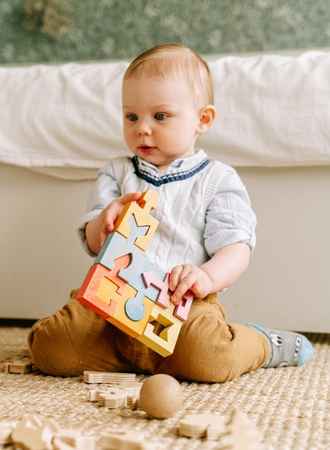
Types of Learning Resources Toys
There is an endless array of learning resources toys available for families with children. Popular options include:
- wooden blocks for building structures
- puzzles for developing problem-solving skills
- non-toxic baby toys for early learning
- board games that teach strategy
- art supplies such as crayons or paint sets for creative expression
- musical instruments like xylophones or drums for exploring rhythm
- science kits to explore the natural world around them
- construction sets to build models from real life objects
- dolls or action figures to promote imaginative play
- books filled with stories and facts about the world around us
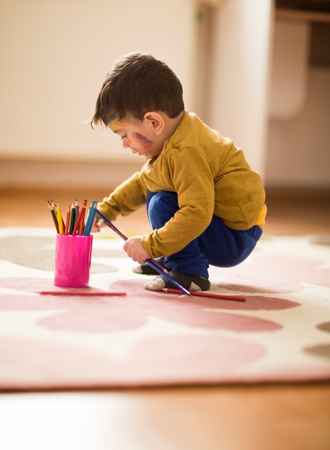
All these types of learning resources toys can help foster a love of learning in young minds!
Benefits of Learning Resources Toys:
Learning resources toys offer many benefits beyond just providing fun activities. These types of educational tools encourage exploration and discovery by allowing kids to interact with their environment in meaningful ways.
Through playing with these kinds of toys they can develop essential skills such as hand-eye coordination, fine motor control, spatial awareness, memory recall abilities, language development (through reading instructions), social interaction (when playing together) among others – all while having fun!
Popular learning resources toys include:
- Magna Tiles which allow kids to construct 3D structures using magnetic tile pieces
- STEM kits, which focus on teaching science, technology, engineering and math concepts through hands-on experiments
- Coding robots that teach basic coding principles
- Magnetic building blocks that let children create colorful designs with magnet pieces; and marble runs where marbles travel down tubes, ramps and bridges
Are Learning Resources Toys Safe and Non-Toxic?
Not all toys are considered safe toys since they are made from a wide range of materials.
Materials Used in Learning Resources Toys
Learning resources toys are typically made from wood, plastic, metal or fabric.
- Wood is a popular choice for learning resources toys because it’s strong and durable, and can be easily cleaned with soap and water.
- Plastic is also widely used in learning resources toys as it’s lightweight and easy to shape into different forms.
- Metal is often used for parts that need to move such as wheels on cars or joints on dolls.
- Fabric is usually found in soft toys like stuffed animals or puppets.
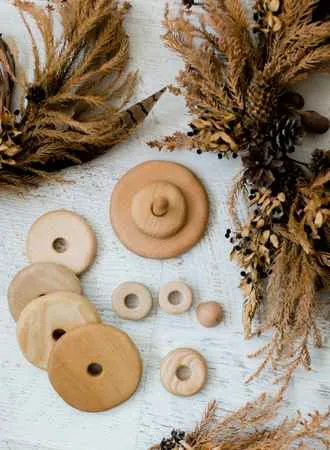
Safety Standards for Learning Resources Toys
When buying learning resources toys, make sure they meet safety standards set by the American Society for Testing and Materials (ASTM). ASTM sets safety requirements for materials used in children’s products including toy safety standards which cover things like flammability, choking hazards, lead content etc.
Look out for labels that indicate compliance with these standards when shopping around so you know your child will be safe playing with their new toy!
Tips For Choosing Non Toxic Learning Resources Toys
It is important to look out for non-toxic materials when choosing learning resources toys. This means avoiding items containing toxic chemicals such as BPA (Bisphenol A) or phthalates, which have been linked to health issues like hormone disruption and cancer.
Before purchasing any plastics, online or from store shelves, make sure they are labeled “BPA free” or “phthalate free” so you know they won’t harm your child’s health if ingested accidentally during playtime.
Check the label of wooden items carefully; some may contain formaldehyde which can cause skin irritation if touched directly without protection gloves on hand.
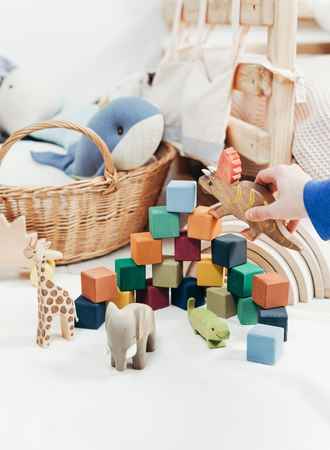
How to Clean and Store Learning Resources Toys?
Cleaning and properly storing learning resources toys is essential to ensure they remain safe and hygienic.
Cleaning Tips
Before cleaning, check the manufacturer’s instructions as some materials may not be suitable for certain cleaning products.
- For your wonderful wooden toys, use a damp cloth or sponge with mild soap and warm water.
- Avoid submerging non-toxic wooden toys in water as this can cause warping and damage the wood.
- For plastic toys, use a mild detergent solution or an antibacterial spray cleaner such as Lysol® Disinfectant Spray.
- Rinse off any residue with clean water before drying thoroughly with a soft cloth or paper towel.
Storing Tips
- Store wooden items away from direct sunlight and moisture which can cause warping over time.
- Plastic items should also be kept away from heat sources such as radiators which could melt the material over time if exposed to too much heat.
- It’s best to store these toys on shelves that are easy to reach so children can access them easily without having to climb up high shelves or cupboards where they might injure themselves while trying to get their favorite toy down.
Additional Tips
When disposing of learning resources toys, it is important to do so responsibly by recycling whenever possible. Throwing them into landfill sites should be avoided as they are non-biodegradable and will take hundreds of years to decompose naturally.
If you have any questions about how best to dispose of your old learning resources toys, contact your local council for advice on what options are available in your area such as donation centers or collection points where unwanted items can be recycled safely and efficiently instead of ending up in landfills.
Alternatives to Non-Toxic Learning Resources Toys
When it comes to toys for children, safety and sustainability are top priorities. Unfortunately, many traditional learning resources toys contain toxic materials that can be harmful to kids’ health. Thankfully, there are plenty of alternatives on the market today made from natural materials that provide a safe and eco-friendly option for families.
Materials Used in Alternatives to Non Toxic Learning Resources Toys
Natural materials such as wood, cotton, wool, bamboo and even recycled paper can all be used in place of plastic or other synthetic materials when creating learning resources toys.
- Solid wood and natural rubber are especially popular due to their durability and ability to last for years with proper care. Toys made from rubberwood which come from rubber trees that no longer produce latex are also becoming popular.
- Organic cotton is also a great choice as it is soft and comfortable against skin while being breathable at the same time.
- Wool has similar benefits but provides an extra layer of warmth which makes it perfect for winter months or cold climates.
- Bamboo is another sustainable material that offers strength and flexibility while being naturally antibacterial so it won’t harbor germs like some other fabrics might do over time.
- Recycled paper products offer a great way to reduce waste by using upcycled items instead of new ones every time you need something new.
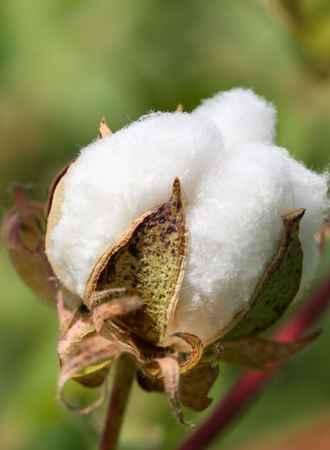
Benefits of Alternatives to Non Toxic Learning Resources Toys
Not only are these natural materials safer than their synthetic counterparts but they also have several additional benefits too! For starters, they tend to be more durable meaning they will last longer before needing replacement which helps save money in the long run as well as reducing waste overall since fewer items end up in landfills or recycling centers each year.
Additionally, these types of toys often encourage open ended play where kids use their imaginations rather than relying on pre-programmed activities which helps foster creativity while teaching them important problem solving skills too!
There are many alternatives to non-toxic learning resources toys. Popular brands includ:
- Plan Toys makes some of our favorite toys, including puzzles and games, dollhouses, and train sets made from natural rubberwood trees.
- Hape Toys specializes in educational wooden building blocks.
- Green Toys has kitchen playsets, bath toys and bathtub boats.
- Grapat features colorful wooden figures and sorting bowls.
- Melissa & Doug Toys are also popular for their wide range of wooden toys for early learning.
- Infantino toys are known for their plush toys, stroller toys and other non toxic toys for kids.
No matter what type of toy your child needs, there should be something suitable available without worrying about potential toxins inside them.
FAQs on Learning Resources Toy Safety
How can you tell if a toy is toxic?
The best way to tell if a toy is toxic is to look for the certification labels. Toys that are certified by organizations such as Greenguard, ASTM International and EN71 are guaranteed to be free of hazardous materials and chemicals.
Additionally, you can research the material used in the toy – plastic toys should have a recycling code on them which will indicate what type of plastic it is made from. Avoid PVC (polyvinyl chloride) or any plastics with BPA (bisphenol A).
Finally, check for any strong odors coming from the toy; these could be signs of chemical off-gassing which can be harmful when inhaled. By taking these steps, you can be sure that the toy is safe and non-toxic.
Are all toys BPA free?
No, not all toys are free from BPA. A plastic toy may contain the chemical bisphenol A (BPA), which has been linked to a range of health issues in humans that can also affect the central nervous system. Many toys contain one or several types of plastics. To ensure that your family is playing with safe and non-toxic toys, it’s important to look for those labeled as “BPA-free” or made from natural materials such as wood or cloth.
You can research toy manufacturers to make sure they’re not using harmful chemicals on their toys. Moreover, avoid painted wooden toys if they are not made by a reputable toy maker. If possible, choose toys that are made from organic and fair trade materials, and finished with non-toxic paints such as child-safe inks, non-toxic stains, eco-friendly dyes or water-based paints.
When choosing Waldorf dolls, make sure their parts don’t include “flame retardants,” which are often found in car seats, sleepwear but have been added to doll clothes. Avoid toys, play kits and baby products such as sippy cups that are not explicit about lead exposure and whether or not they’re toxin-free. Never buy toys that didn’t pass first or third party testing and include pieces that are considered a choking hazard.
Of course, you can always avoid plastic toys and opt for something more eco-friendly. And if you want to take your toy buying skill to the next level, choose plastic-free toys made from sustainable wood and from a sustainable factory.
Is Learning Resources Play Food BPA Free?
Yes, learning resources play food is free from BPA All of their products are made with non-toxic materials and they have a strict commitment to safety standards. They use only the highest quality materials in their toys and all of their plastic components are certified as phthalate-free, lead-free, and BPA-free.
Their high quality wooden toys also meet stringent safety requirements for formaldehyde content and heavy metals such as arsenic, cadmium, chromium, mercury or lead. All of their products are designed to help families reduce waste and promote sustainability.
Parents have similar question about VTech toys.
Is Little Tikes non toxic?
Little Tikes is a popular brand of children’s toys, and they do not use any toxic materials in their products. All Little Tikes toys are tested to meet or exceed all applicable safety standards set by the US Consumer Product Safety Commission (CPSC). The company also follows strict guidelines for product testing and quality control to ensure that their products are safe for children.
Little Tikes has been certified as meeting the requirements of ASTM F963-17, which is an international standard for toy safety. Therefore, it can be concluded that Little Tikes toys are non-toxic and safe for your family.
Are Toys Made From Real Wood Worth It?
Wooden toys for kids are a great investment and are often worth it for several reasons.
Wooden toys are durable and long-lasting. They are sturdy and can withstand rough play, meaning they can last for a long time. This also makes them a good investment as they can be passed down to younger siblings or future generations.
Wooden toys are safe for kids to play with. They are generally safer than plastic toys, which can often contain harmful chemicals. Wooden toys are also less likely to break or shatter, reducing the risk of injury.
Wooden toys often encourage imaginative play and creativity. They don’t have pre-programmed functions or sounds, which means children can use them to create their own games and stories. This can help develop a child’s cognitive and social skills.
Wooden toys are an eco-friendly option. They are made from renewable resources and can be easily recycled or biodegraded. This makes them a more environmentally friendly choice than plastic toys.
Wooden toys have a classic and timeless appeal. They don’t go out of fashion or become obsolete, which means they can be enjoyed by kids of all ages. This makes them a good investment for parents who want to provide their children with safe, durable, and eco-friendly toys that encourage imaginative play and creativity.





